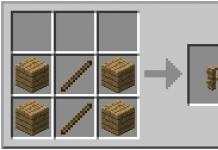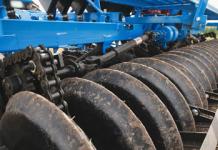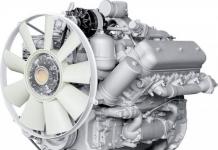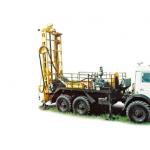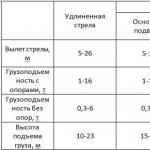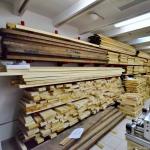Our company is engaged in the sale of various brands of five-core cables from warehouses located throughout Russia, or under an order for production. Cable.RF specialists know everything about this product, so they will competently advise you on the choice of five-core cables, taking into account technical requirements, help you make timely delivery and select the appropriate type of transport.
Five-core cables are used to organize power networks of alternating (three-phase and single-phase) current with a frequency of up to 50 Hz and a voltage of up to 1 kV, to provide energy to various electrical installations and distribution devices. Also, a five-core cable is used for stationary connection of drive equipment for metal-cutting, metalworking and woodworking machines, pumps, electric motors (including modifications with frequency control).
Cables included in this group can be used for non-stationary laying of power lines used to connect various mobile mechanisms (excavators, conveyor and lifting systems, mining equipment, etc.). In addition, an electric cable of 5 cores is used for laying control, management and signaling networks (security or fire); transfer of analog or digital information, making assembly (switching) connections inside electrical installations and devices or between their individual blocks (printed circuit boards).
Five-core cables of some brands can be used to connect equipment (including heating equipment) operated under extreme conditions under water, in the metallurgical and chemical industries, etc. With the help of such cables, control, measuring and telemetry sensors can be connected.
Depending on the features of the design and intended purpose, the cable 5 cores can be laid in water, in the ground (including flooded soils or soils subject to deformations and displacements), in various cable structures (collectors, wells, sewers), indoors (including number of dwellings). Some grades are designed for outdoor installation on galleries, bridges, flyovers, building walls, or lighting poles and power pylons. Cables with five cores can be used in the temperature range from -60 °C to +600 °C.
Cables of this group are produced with single-wire (monolithic) or multi-wire current-carrying conductors of round or sector shape. For the manufacture of conductors, copper, tinned copper, nickel-plated copper or aluminum wires are used. Based on the number and diameter of the wires from which the current-carrying cores are formed, they can belong to the 1-5th category of flexibility according to GOST 22483. The operating conditions of some brands of cables involve the imposition of heat-resistant barriers on the surface of the cores (mica-containing tapes, fiberglass) or joint twisting of the cores with water blocking threads.
As an insulating material that is superimposed on the current-carrying cores in this group of cables, special heat-resistant tapes, polymeric materials, polyethylene, rubber (including silicone and ethylene propylene) or polyvinyl chloride compound are used.
The core of the cable is formed from insulated conductors. The twisting of the cores into a cable can be carried out with the simultaneous pressing of the free space between them with rubber compounds or plastic. In some brands of five-core cables, the core is formed around a rubber cordel or reinforcing synthetic threads. The stranded conductors can be covered with belt insulation made of synthetic or water-blocking tapes, as well as an inner sheath made of plastic.
The operating conditions of some brands of cables with five cores imply the presence of screens in the cable structure that prevent the spread of electromagnetic interference into the surrounding space (power cables) or serve to protect information and control (control) signals transmitted over the cable. Screens are made of copper or aluminum foil; polymeric tapes and films coated with a layer of aluminum; copper (tinned copper) wires and spiral copper tapes.
The five-core cable is produced with an outer sheath made of PVC, thermoplastic elastomer, polyurethane, polymeric materials or polyethylene. Some brands are made with a rubber sheath (including silicone) or in the form of a heat-resistant fiberglass braid.
To protect five-core cables laid along the bottom of reservoirs, in soils subject to deformation, as well as in places where mechanical stress is applied to the cable, armor is used. It can be made of strips (steel, galvanized steel or aluminium) or wires (galvanized steel, aluminum or aluminum alloys).
Main advantages:
- can be used to perform various practical tasks;
- operation of cables of this group is possible in a wide temperature range;
- some brands retain the ability to perform their functions in conditions of exposure to fire, water or aggressive environments.
Five-core cable price
You can buy a five-core cable from us at a bargain price, for this you need to leave an application for the calculation of the cost to the company manager.
An electric cable channel 220 V is needed in any private house and apartment. Copper, which is part of the wire, provides the passage of current. However, before buying, you need to know what thickness is needed. It's good that each box now has an inscription and signs that simplify the choice. What is the section for residential wiring? They will help with the choice of pictures of tables and cable standards. What cable is needed in the apartment and at home, how to choose it? What should be the marking for 220 volts? All about cables and their sections in this material.
What is a cable socket
First of all, you need to understand that a cable socket is a part of the connector that is made as one piece with the cable. It can also be attached to a flexible cable to connect it to a power source.

Peculiarities:
- In its structure and bottom view, the cable outlet is the same as the stationary one.
- Such sockets are installed in residential and public buildings to bring the cable to the desired length.
- This product consists of a body with high strength.
- The case is made of high quality plastic, can be black or white.
- The contacts are made of high resilience phosphor bronze and a special shutter.
- The cable socket works at a temperature from 0 to 50 ᵒС.
Using a cable socket, you can connect cables directly to the wiring. It is very convenient and greatly simplifies installation. Of course, there are certain standards for cable cross-sections.
Each standard is designed for a certain current, therefore, when connecting, it is necessary that the sum of the powers of all devices powered by electricity does not exceed this value.
This is taken into account even during the design of electrical wiring in the house. When connecting, it is important not to confuse the wires and the place where they need to be put, that is, the polarity. If this is neglected, a short circuit is possible. It is important not to confuse zero, phase and ground.
Features of a five-core cable
Single-core and two-core cables are used for laying alternating current in one phase of the network. If a single-core cable is laid in parallel in 2 rows, then a two-core cable in one. In this case, one core is connected to the phase, and the other to zero, while the zero wire most often has a blue or blue color.
To understand what a five-core cable is, you need to know that all VVGs are divided into 5 types according to the number of cores in them:
- Single core;
- Two-core;
- Three-core;
- Four-wire;
- Five-core.
A cable with 4 and 5 cores is installed in three-phase networks. In the first case, 3 cores are phases, and the fourth is zero. In another case (when lived 5), another one is a ground wire. The cross section of all conductors that conduct current is in the range from 1.5 to 50 mm.
If you add them all, then you end up with a cross section of the cable itself.

In a single-core cable, the cross section varies from 1.5 to 240 mm. In a two-core, three-core and four-core wire, the maximum cross-sectional size reaches 95 mm². In a five-core, it reaches 50 mm². The larger the cross section of the main conductors, the smaller the cross section of the grounding and neutral conductors.
Instructions: how to connect the cable to the outlet
All technical aspects are indicated in the wire marking. The number 1-5 shows the number of cores, and the next indicator, for example, 1, shows the cross section in mm squared. The cable is attached to the outlet most often in low-voltage lines.
The whole process in this case looks like this:
- First of all, you need to turn off the machine, that is, de-energize the network. To do this, plugs are unscrewed or circuit breakers are turned off at the input.
- The second step is to check the absence of current using a special tool called a multimeter. You can also use an indicator or voltage indicator instead.
- The next step is to remove the old outlet. To do this, you need to remove the socket cover, then unscrew the screws of the socket legs, and pull it out of the box and disconnect all power wires.
- Now you need to strip the wire.
- The cable that is led into the hole in the socket must be prepared for connection. That is, remove the outer insulation about 20 cm from the cable. If the cable is laid with single insulation, then you can simply separate its cores from each other by 10 cm.
Now you need to connect the outlet, that is, connect the contacts to the power wires. The bare part of the cable is inserted into the terminal and carefully tightened with a screw; the main thing in this matter is not to pinch the wire. To make the connection reliable, you need to bend the cable with a ring with a diameter of 5 mm.
If a grounded outlet is being installed, then the grounding cable is connected to the corresponding terminal.
Before the last step is the installation of the socket in the box. It is carried out after connecting all the supply cables. The working part is placed exactly without distortions. All wires need to hide the sockets and fix the socket with the help of tabs and screws. The last step is to screw on the cover and check the operation of the outlet.
